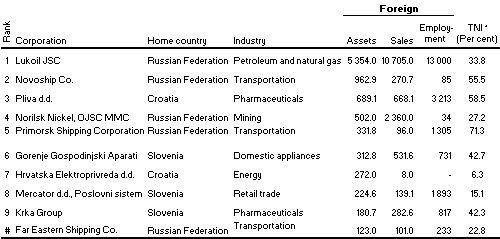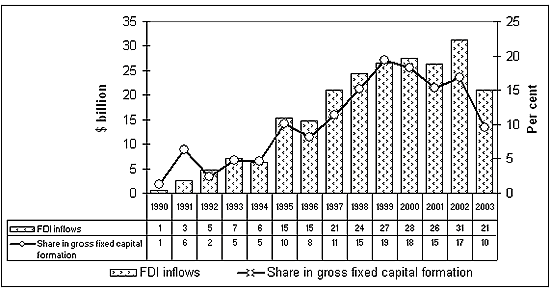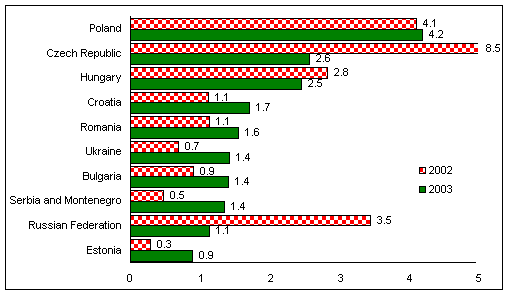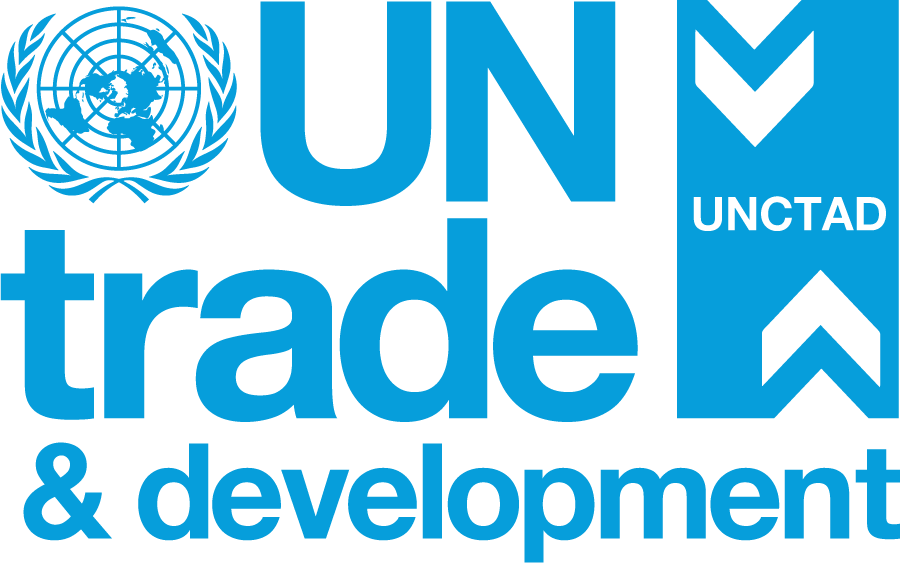| EMBARGO The contents of this Report must not be quoted or summarized in the print, broadcast or electronic media before 22 September 2004 17:00 GMT (1 PM New York, 19:00 Geneva, 22:30 Delhi,02:00 - 23 September Tokyo) |
Foreign direct investment (FDI) inflows into Central and Eastern Europe (CEE) declined from a record $31 billion in 2002 to a low of $21 billion last year (figure 1), the result of the end of privatization in the Czech Republic and Slovakia, according to the World Investment Report 2004: The Shift Towards Services(1), released today. "This was an unexpected plunge", says Carlos Fortin, Deputy Secretary-General of UNCTAD, when launching the Report. Despite the decline in 2003, the Report predicts that the medium-term prospects for further FDI growth in CEE are good.
Inflows down
In all, FDI inflows last year rose in 10 of the region´s countries and fell in nine , with most countries receiving less than $1 billion (table 1). Inflows to the Russian Federation declined from $3.5 billion to $1 billion. Inward FDI flows as a percentage of gross fixed capital formation in CEE declined from 17% in 2002 to 10% in 2003 (figure 1).
The region´s modest performance last year suggests that no large-scale diversion of FDI from the older European Union (EU) members to CEE countries has occurred. Eight of the nations joining the Union this year are located in the region, and there was some speculation that they might draw off investments from elsewhere in Europe.
Greenfield projects, spread over a longer period and generally smaller in size, could not immediately compensate for the fall in privatization-related FDI in the Czech Republic and Slovakia, despite the fact that both countries had been selected as locations for new automobile plants by transnational corporations (TNCs) (Toyota-PSA in the Czech Republic and PSA and Hyundai in Slovakia). In particular, thanks to FDI in large assembly projects, Slovakia is on its way to becoming a major European hub for automobile production(2).
Aside from the Czech Republic and Slovakia, the decline in FDI inflows was small, from $19 billion in 2002 to $18 billion in 2003. The ups and downs of FDI among CEE countries in 2003 re-established Poland, the Czech Republic and Hungary as the three top locations for inward FDI in the region (figure 2).
Far from diverting FDI flows from the old members of the EU, the group of eight CEE countries that joined the EU in May 2004 - the Czech Republic, Estonia, Hungary, Latvia, Lithuania, Poland, Slovenia and Slovakia - saw their combined FDI inflows shrink from $23 billion in 2002 to $11 billion in 2003.
In the other 11 countries of the region, inflows climbed from $8.6 billion in 2002 to $9.5 billion in 2003, representing an increase in their share of total FDI inflows to CEE from 28% in 2002 to 45% in 2003. In the South-East European members of this group(3), a part of the high FDI inflows can be explained by privatization deals, although these do not yet match the size of previous privatization deals in such countries as the Czech Republic, Hungary and Poland.
Outflows up
FDI outflows from CEE expanded by 42% in 2003, from $5 billion to $7 billion. The Russian Federation remained the leading source, accounting for the lion´s share (59%).
The traditional dominance of Russian firms is reflected in the composition of UNCTAD´s list of the top TNCs from CEE, in which Russian firms are larger in size than TNCs from other CEE countries (table 2). The performance of these top TNCs remained resilient in 2002 despite the global economic slowdown. The explanation lies partly in the anticipation of further EU enlargement by CEE TNCs, especially those from the Russian Federation and Croatia, which aspire to gain a foothold in the 25-member EU market. The list is dominated by natural-resource-based firms (five on the list) and transportation companies (also five).
Sunny prospects
Economic growth is expected to drive FDI growth in CEE, according to the new UNCTAD report. Flows to EU accession countries are likely to experience a "second wind" of FDI from traditional investors seeking to reap the benefits of these countries´ redefined location advantages.
As part of their efforts to enhance their attractiveness to investors (domestic and foreign), several new EU members have lowered their corporate taxes to levels comparable to those in such locations as Ireland. The combination of low corporate tax rates, relatively low wages and access to EU subsidies - enhanced by a favourable investment climate, a highly skilled workforce and free access to the rest of the EU market - makes the accession countries attractive locations for FDI, both from other EU countries and from third countries.
"Not surprisingly, prospects for foreign direct investment in Central and Eastern Europe are promising", says Karl P. Sauvant, Director of UNCTAD´s Investment Division. In fact, more than two thirds of the top TNCs and location experts surveyed by UNCTAD earlier this year expected an upturn in FDI inflows during 2004-2005, the highest proportion of such responses among all regions. Investment promotion agencies will help, according to survey results, especially through additional targeting and FDI policy liberalization(4).
| The World Investment Report and its database are available online at www.unctad.org/wir and www.unctad.org/fdistatistics . A complete set of UNCTAD´s major publications on FDI and TNCs - the UNCTAD/UNCTC Digital Library - can be found at http://unctc.unctad.org |
ANNEX
Tables and figures
Table 1. CEE: country distribution of FDI inflows, by range, 2003

Source: UNCTAD, World Investment Report 2004
Table 2. The top 10 non-financial TNCs from Central and Eastern Europe, ranked by foreign assets, 2002 (Millions of dollars and number of employees)

Source: UNCTAD, World Investment Report 2004
Note: a "TNI" is the abbreviation for "Transnationality Index". The Transnationality Index is calculated as the average of the following three ratios: foreign assets to total assets, foreign sales to total sales and foreign employment to total employment.
Figure 1. CEE: FDI inflows and their share in gross fixed capital formation, 1990-2003

Source: UNCTAD, World Investment Report 2004
Figure 2. The top 20 recipients of FDI inflows in Central and Eastern Europe, 2002 and 2003

Source: UNCTAD, World Investment Report 2004


